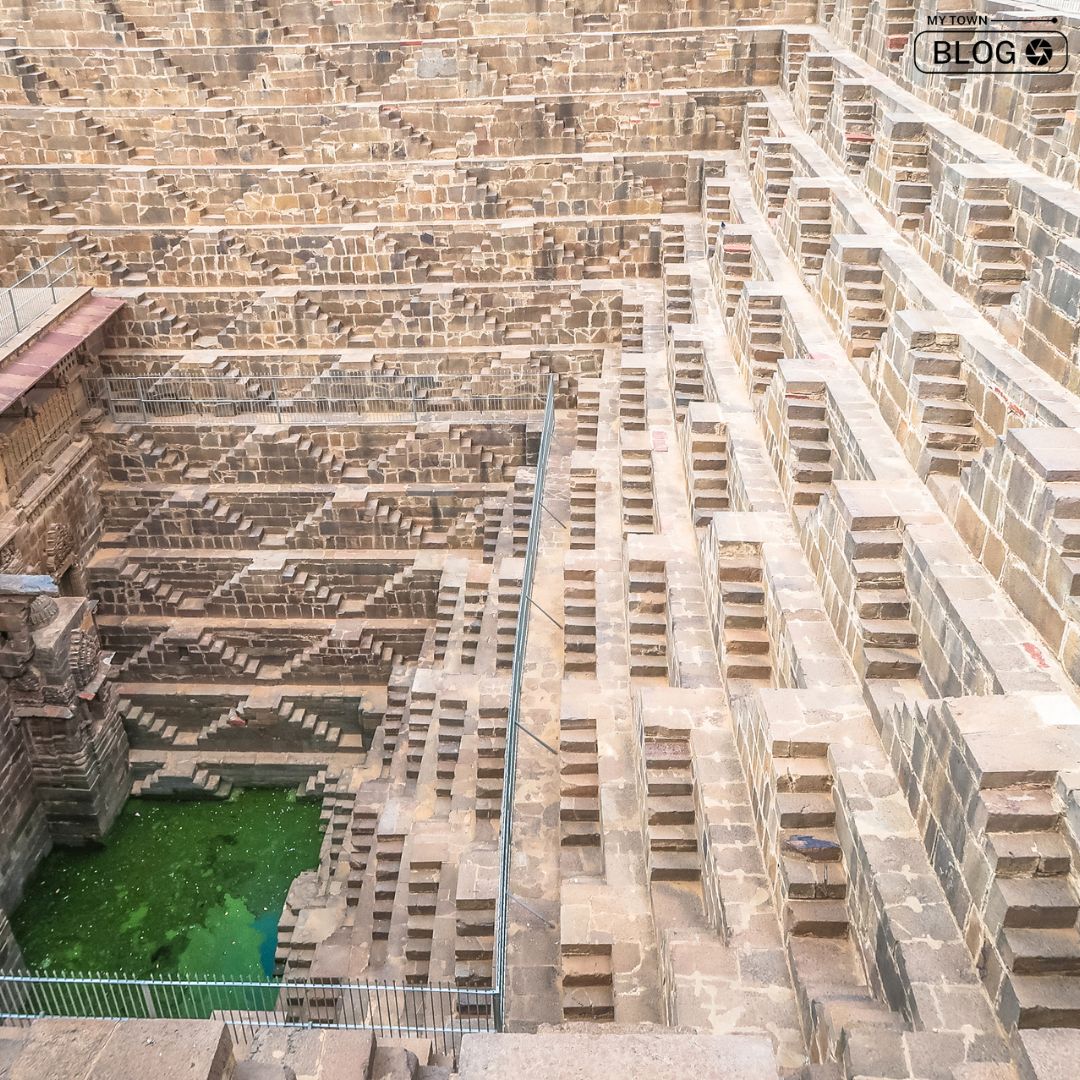Exploring the architectural marvels and historical gems of India takes us on a captivating journey through time. Among these treasures, the top ancient stepwells in India stand as intricate testaments to the country’s ingenious water management systems and artistic heritage. These awe-inspiring structures, crafted with precision and adorned with intricate designs. Provide not only a glimpse into the practical solutions devised by ancient civilizations but also offer a window into the cultural and artistic expressions of their times.
Chand Baori, Rajasthan
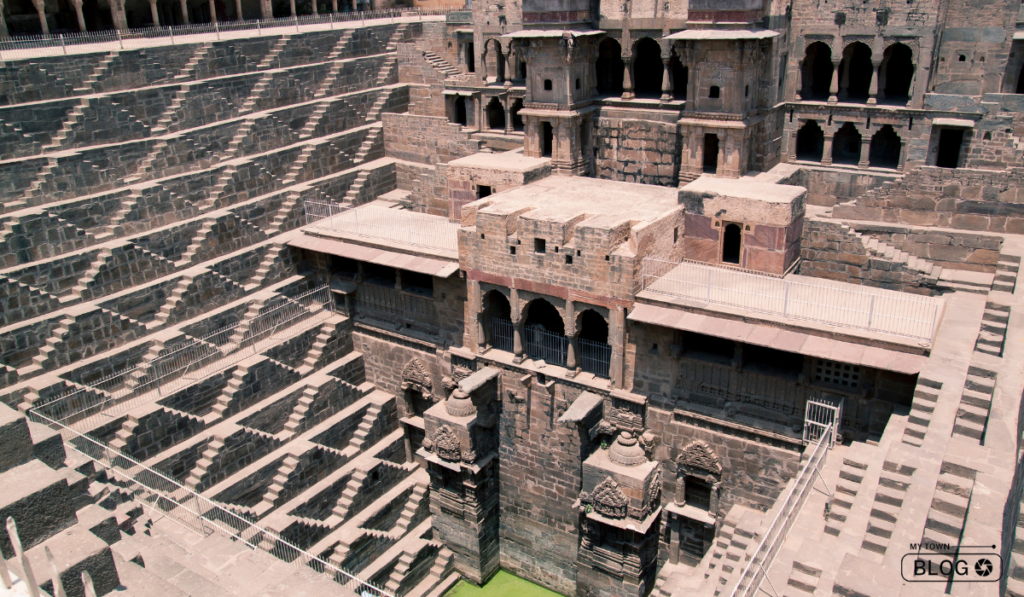
Chand Baori, located in the picturesque village of Abhaneri in Rajasthan. Stands as a testament to the architectural genius of ancient India. This stepwell, dating back to the 9th century, is not only a functional water storage structure but also an awe-inspiring work of art. With a remarkable 3,500 symmetrically arranged steps that descend an astonishing 13 stories. Chand Baori is one of the deepest and most visually striking stepwells in India. Its intricate design and sheer scale highlight the ingenuity of its creators in addressing both practical water conservation needs and the creative expression of architecture.
- Location: Bandikui, Dausa, Rajasthan
Agrasen ki Baoli, Delhi
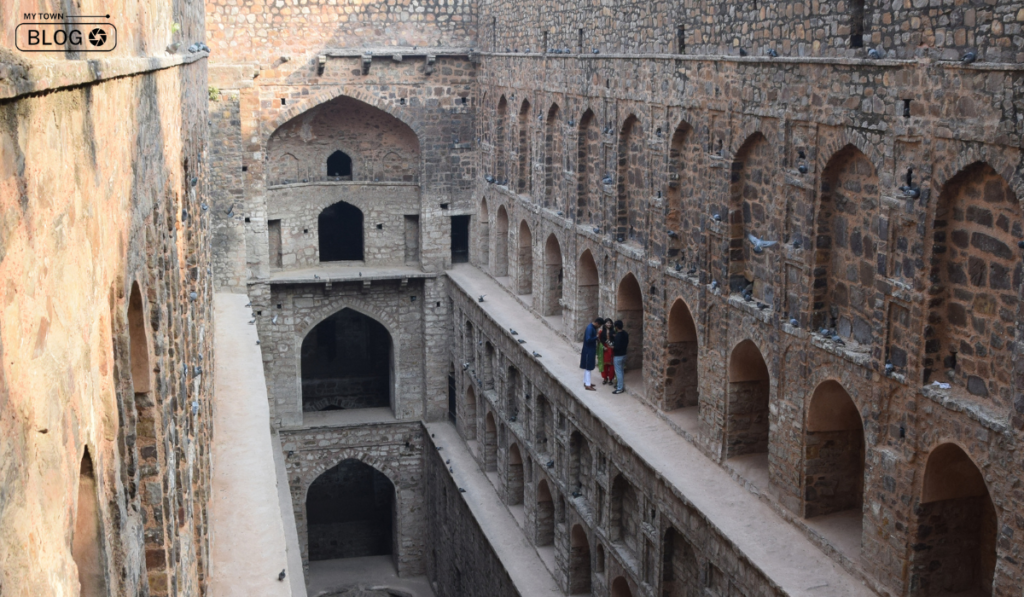
Agrasen ki Baoli, nestled within the bustling heart of Delhi, transports visitors into a serene oasis of history. Believed to have been built during the Mahabharata era, this stepwell exhibits a harmonious blend of Indo-Islamic architectural elements. The descending levels of steps, adorned with arched alcoves and pillars, create an entrancing play of light and shadow. In the midst of the urban chaos. Agrasen ki Baoli stands as a poignant reminder of the city’s historical roots and architectural prowess.
- Location: Hailey Road, KG Marg, near Diwanchand Imaging Centre, New Delhi, Delhi, 110001
Rani ki Vav in Patan, Gujarat
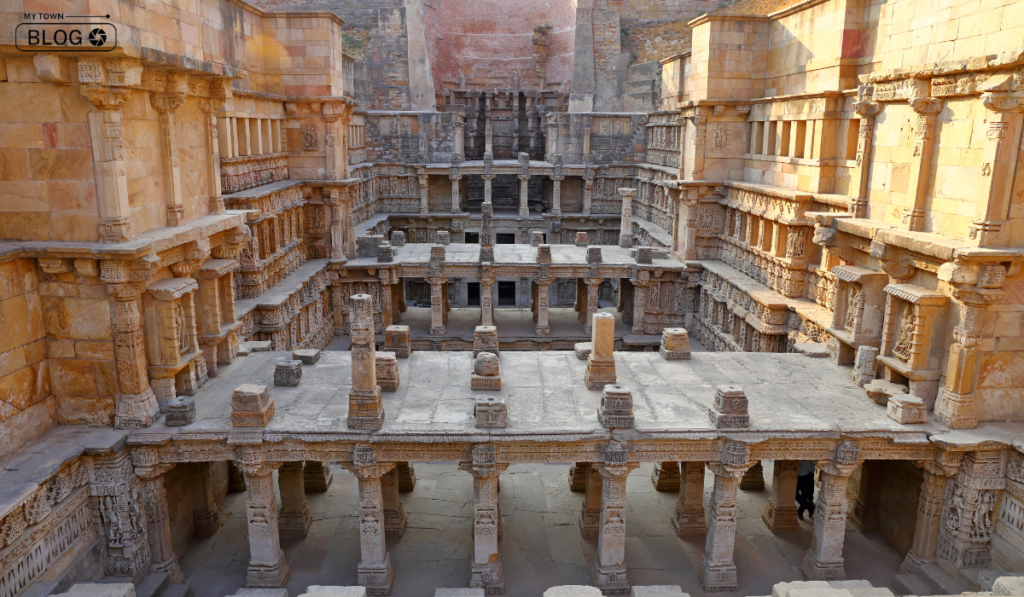
Rani ki Vav, situated in the town of Patan, Gujarat, is a UNESCO World Heritage Site that exemplifies the epitome of stepwell architecture. Constructed during the 11th century, this stepwell is a breathtaking symphony of intricate sculptures, stunning reliefs, and meticulous craftsmanship. The walls of Rani ki Vav are adorned with sculptures depicting various Hindu deities, celestial beings, and mythological narratives, transforming the stepwell into a colossal art gallery. Its meticulously designed structure, combined with its artistic expressions, reveals a fascinating tale of cultural heritage and engineering acumen.
- Location: Mohan Nagar Society, Mohan Nagar Socity, Patan, Samalpati, Gujarat, 384265
Hampi Pushkarani, Karnataka
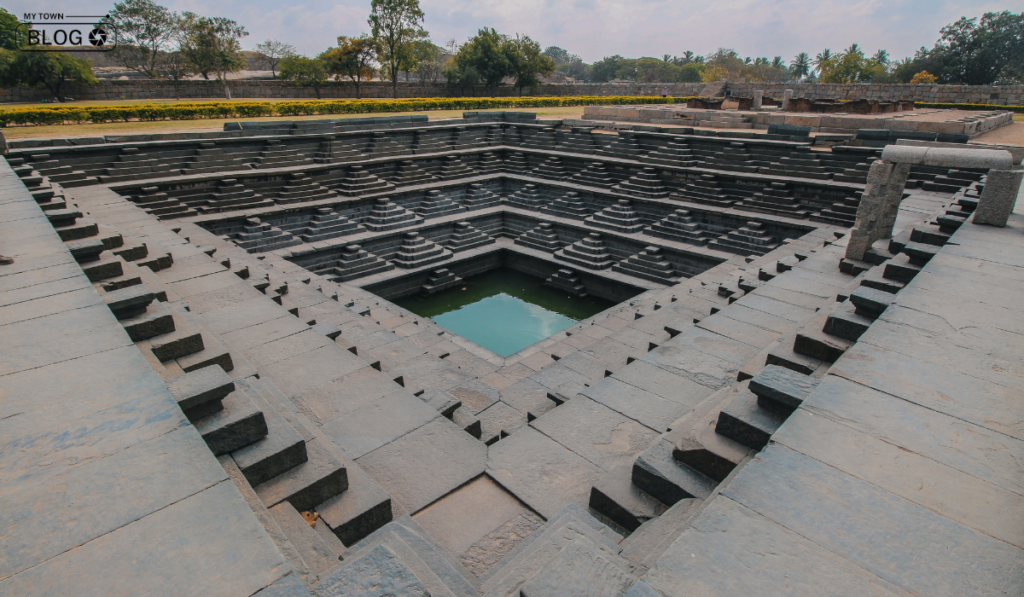
Within the enchanting ruins of Hampi in Karnataka. The Hampi Pushkarani stands as a testament to the architectural prowess of the Vijayanagara Empire. This stepwell, also known as a sacred water tank, showcases the empire’s grandeur and attention to detail. Surrounded by ornate pavilions and intricate carvings, the stepwell offers a glimpse into the glorious past of the empire that once thrived in this region. The Hampi Pushkarani reflects the union of art and utility, leaving visitors mesmerised by its beauty and historical significance.
- Location: Achyutaraya Temple bazaar, Hampi, Karnataka
Adalaj Vav, Gujarat
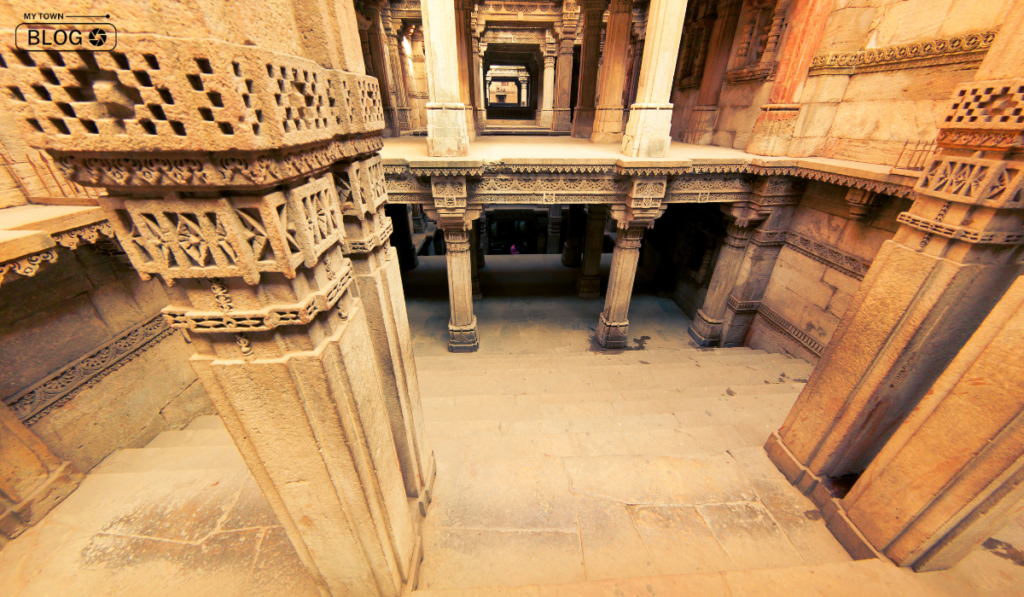
The Adalaj Vav, situated on the outskirts of Ahmedabad, Gujarat, beckons visitors with its architectural splendour and historical significance. Built in the 15th century, this stepwell narrates tales of craftsmanship and tragedy, making it a poignant blend of artistry and history. The stepwell’s five stories are adorned with ornate columns, intricately carved walls, and beautifully designed niches. Adalaj Vav’s allure lies not only in its architectural features but also in the stories it holds. Making it a cherished treasure of Gujarat’s cultural heritage.
- Location: Adalaj Road, Adalaj, Gujarat, 382421
Modhera Step-well, Gujarat
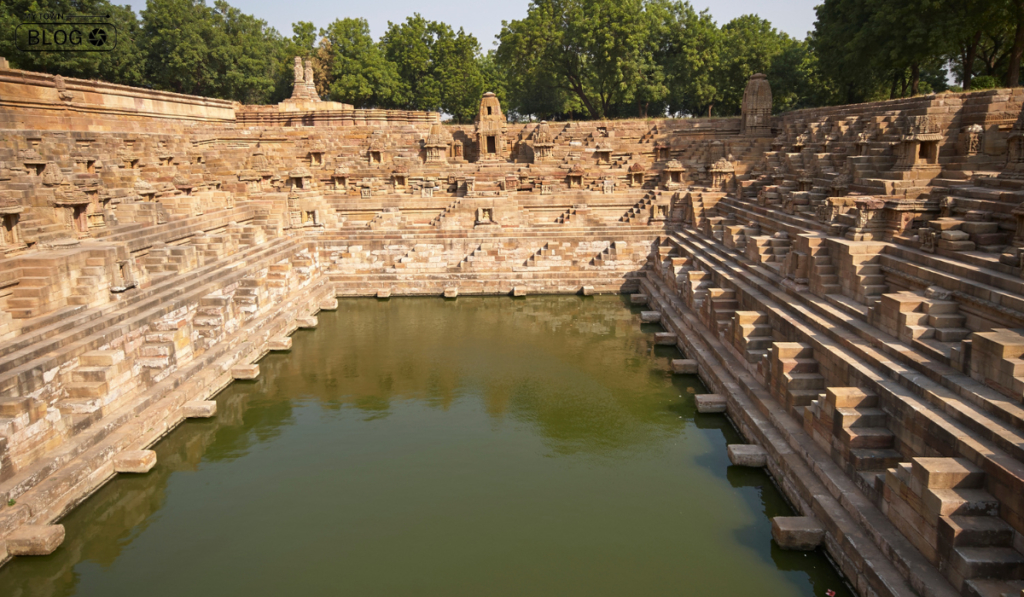
The Modhera Step-well, nestled near the iconic Sun Temple of Modhera in Gujarat. Offers a glimpse into the lesser-known architectural marvels of the region. With its distinctive octagonal shape and ornate carvings, this stepwell provides an enchanting contrast to the grandeur of the nearby temple. It served as a place of rest for travellers visiting the temple. Reflecting the cultural and architectural ingenuity of the era. The Modhera Step-Well invites explorers to discover its hidden history and artistic finesse.
- Location: Modhera, Gujarat, 384212
Rajon Ki Baoli, Delhi
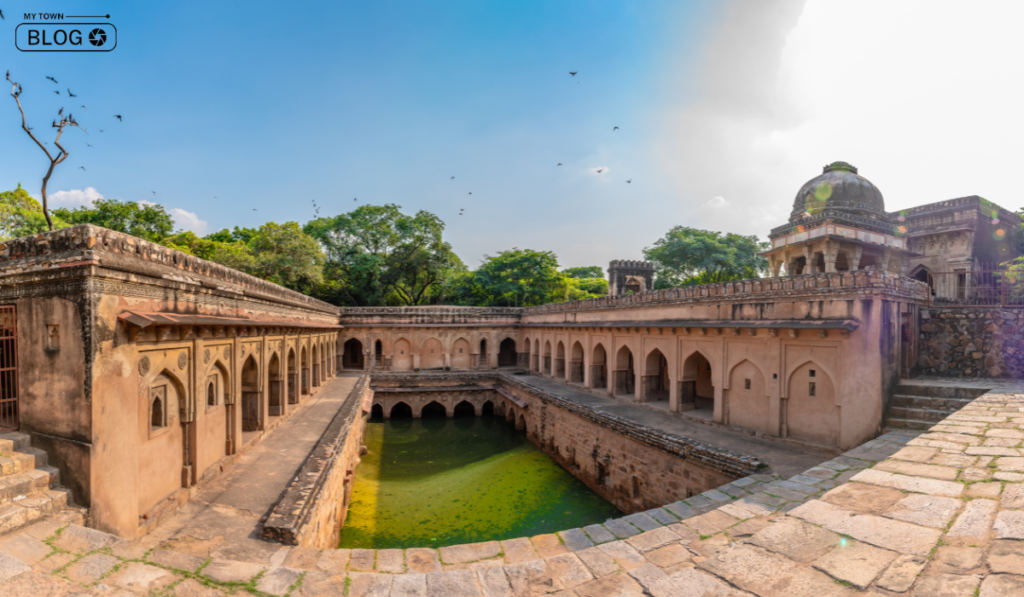
Tucked away within the Mehrauli Archaeological Park in Delhi. Rajon Ki Baoli remains a hidden gem that echoes the history of the Tughlaq dynasty. Its origins trace back to the Tughlaq era, and the stepwell stands as a testament to the practical yet aesthetically pleasing aspects of stepwell construction. The meticulously designed steps, galleries, and chambers showcase the architectural prowess of the time. Rajon Ki Baoli’s serene surroundings and historical significance make it a unique site for visitors seeking to unravel Delhi’s lesser-known treasures.
- Location: Mehrauli Archeological Park Trl, Mehrauli Village, Mehrauli, New Delhi, Delhi, 110016
Baoli Ghaus Ali Shah, Gurgaon
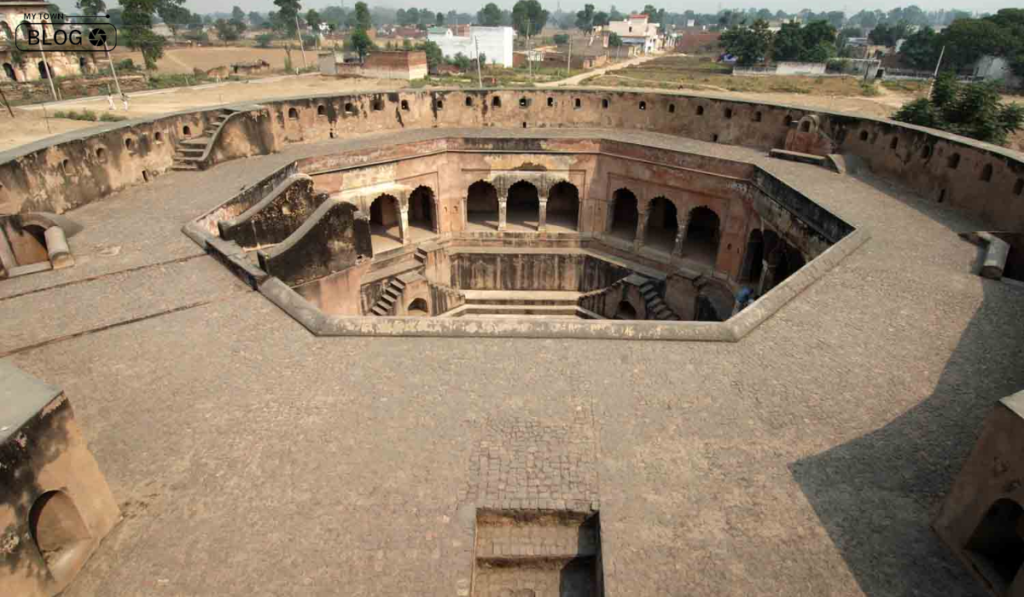
In the quaint village of Farrukhnagar, Haryana, Baoli Ghaus Ali Shah stands as a testament to the region’s architectural heritage. Its unique design, featuring double flights of steps leading to the water level, sets it apart from other stepwells. This stepwell’s historical context and intricate architecture reflect the cultural tapestry of the area. Baoli Ghaus Ali Shah offers a glimpse into the past, inviting visitors to appreciate the architectural marvels that dot India’s diverse landscape.
- Location: Farrukhnagar, District- Gurgaon
Toor Ji ki Jhalra, Rajasthan
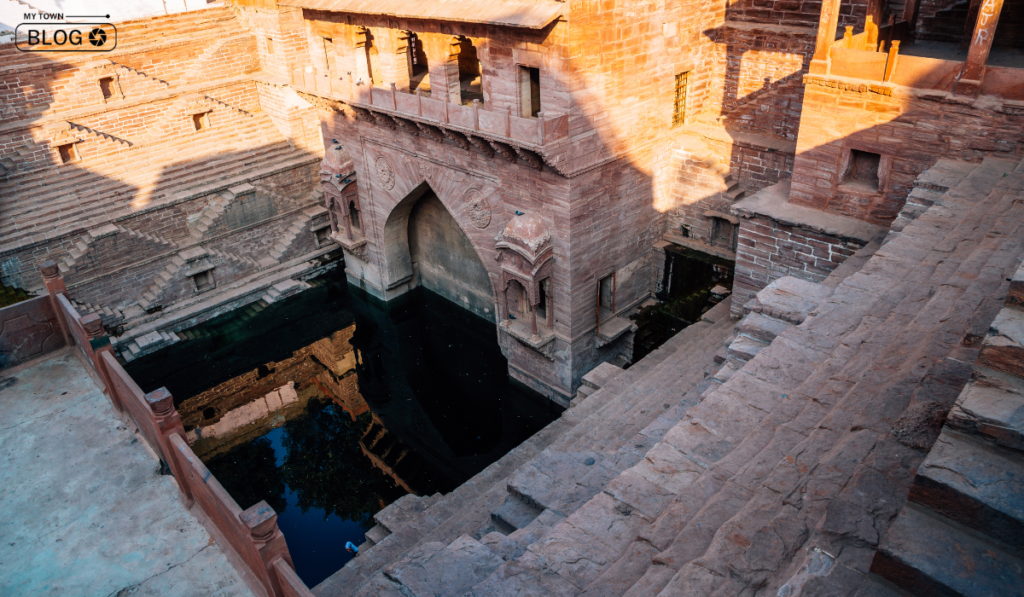
Toor Ji ki Jhalra, nestled in the historic city of Jodhpur, Rajasthan, captures the essence of the region’s architectural legacy. This stepwell underwent restoration efforts to revive its former glory, preserving its artistic charm for generations to come. The stepwell’s geometric patterns, vibrant surroundings, and intricate detailing create a mesmerising spectacle that transports visitors to a bygone era. Toor Ji ki Jhalra showcases Rajasthan’s distinctive architectural style, making it a must-visit site for those seeking to experience the region’s cultural heritage.
- Location: Makrana Mohalla, Sutharo Ka Bass Road, Gulab Sagar, Jodhpur, Rajasthan, 342001
Dada Harir Stepwell, Ahmedabad
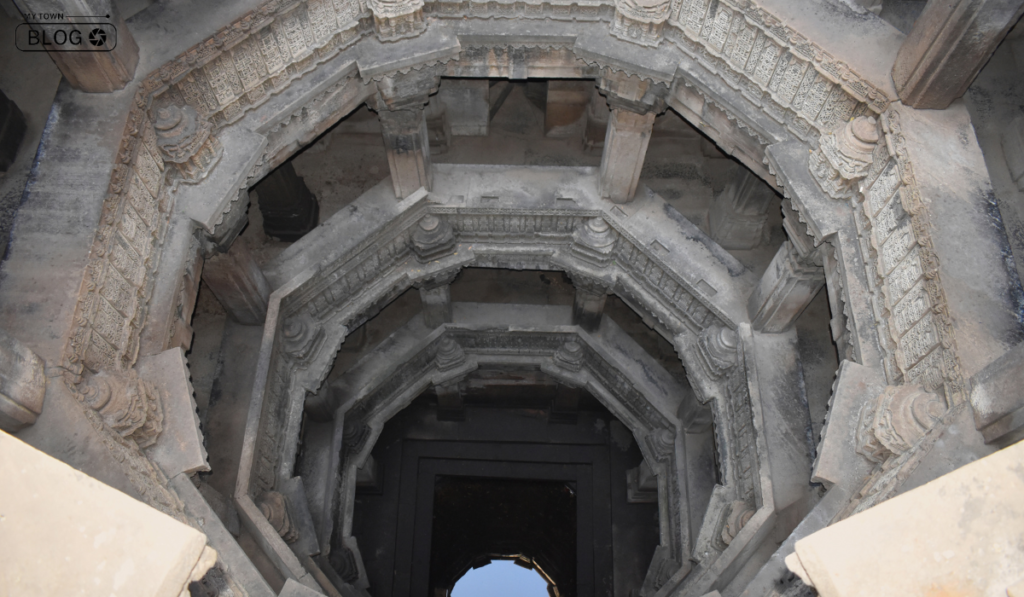
Dada Harir Stepwell, situated in the bustling city of Ahmedabad, Gujarat, offers a captivating journey back in time. This stepwell is a hidden gem that unfolds the history of a bygone era through its unique architectural features. With galleries, chambers, and intricately carved pillars, the stepwell offers insights into the lifestyle and architectural practises of the past. Dada Harir Stepwell’s historical significance and artistic elements provide a fascinating window into the rich tapestry of Gujarat’s heritage.
- Location: Hanumansingh Road, Haripura, Asarwa, Ahmedabad, Gujarat, 380016
Shahi Baoli, Lucknow
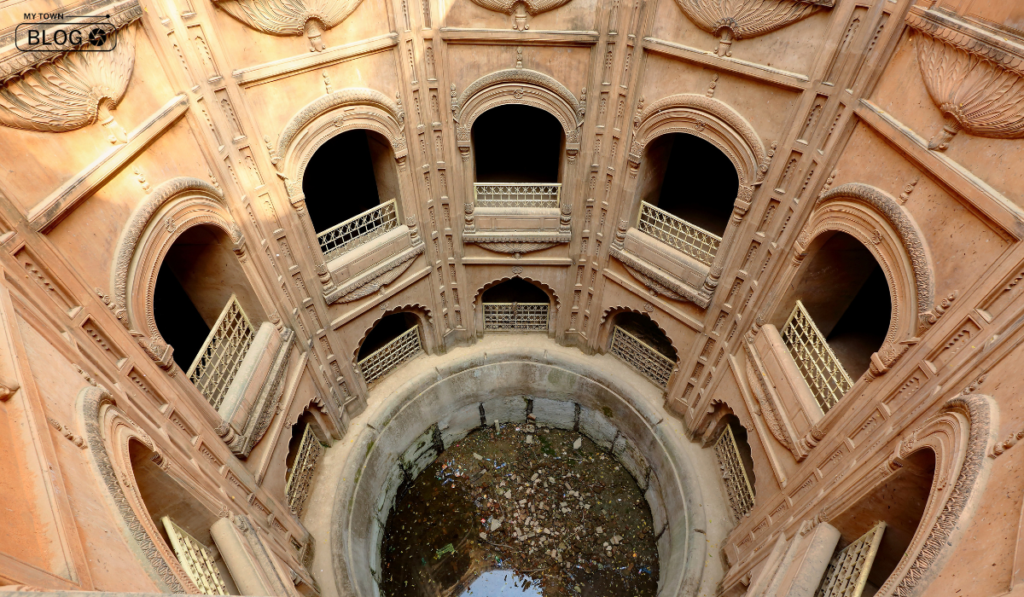
Shahi Baoli, nestled within the historical city of Lucknow, reflects the grandeur of Mughal architecture. This stepwell, dating back to the Mughal era, showcases symmetrical design, arched alcoves, and intricate niches that exude a regal charm. Shahi Baoli’s visual allure is further enhanced by its association with the rich cultural and historical heritage of Lucknow. Amidst the city’s modern developments, the stepwell stands as a reminder of the glorious architectural legacy of the Mughal empire.
- Location: Machchhi Bhavan, Lucknow, Uttar Pradesh, 226003
Panna Meena Ka Kund, Jaipur
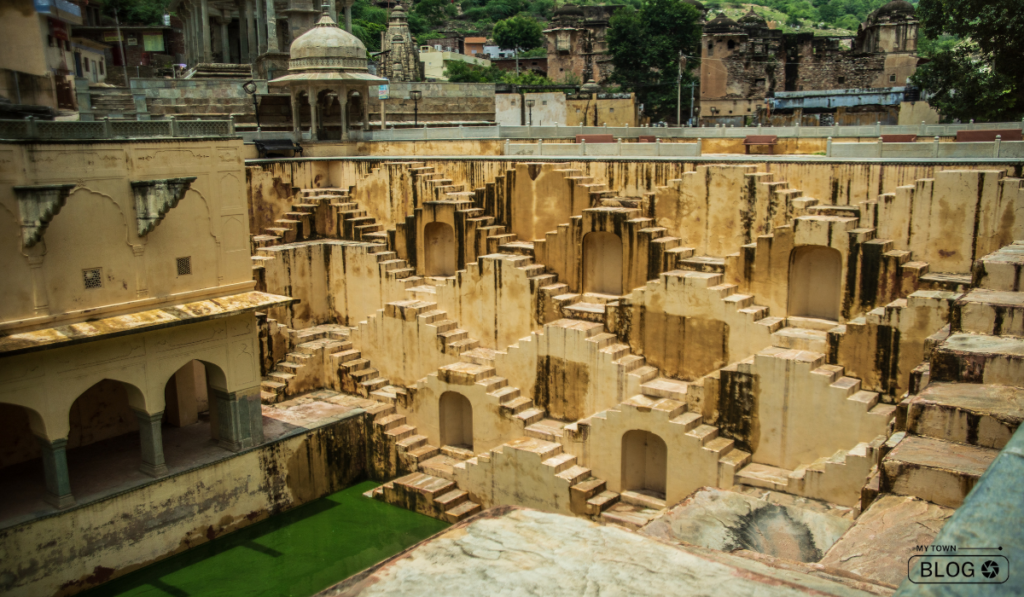
Panna Meena Ka Kund, located in the vibrant city of Jaipur, Rajasthan, is a visual delight that showcases the artistic finesse of stepwell architecture. With its intricate geometric patterns and stunning visual appeal, this stepwell captures the essence of Rajasthan’s cultural heritage. Panna Meena Ka Kund’s architectural details, combined with its vibrant surroundings, create a picturesque setting that draws visitors into its historical narrative.
- Location: Amer, Rajasthan, 302028
Conclusion
The top ancient stepwells in India are not merely functional reservoirs of water but intricate embodiments of history, art, and innovation. These architectural wonders transcend their utilitarian purposes, offering us a deeper understanding of the civilizations that shaped them. Through these marvels, Top Ancient Stepwells in India beckons us to not only admire its past but to appreciate the wisdom of those who came before us and left behind these enduring legacies for generations to come.
FAQs
Where can I find the top ancient stepwells in India?
The top ancient stepwells are scattered across various states of India. Notable locations include Rajasthan, Gujarat, Karnataka, Delhi, and more, each offering a unique glimpse into the country’s architectural diversity.
What is the historical significance of these stepwells?
Stepwells have historical importance as innovative water management systems that served both practical and cultural purposes. They reflect the ingenuity of ancient Indian engineering and often hold religious and artistic significance.
What architectural features make these stepwells unique?
Ancient stepwells boast intricate carvings, symmetrical designs, and elaborate architecture. They are known for their multi-level steps, columns, and pavilions and often display a blend of Hindu, Islamic, and Jain artistry.
How were stepwells constructed in ancient times?
Stepwells were typically constructed by excavating the ground to create a series of levels with steps leading to the water source. Skilled artisans crafted intricate stone carvings and architectural elements to adorn these structures.
Are there guided tours available for exploring these stepwells?
Depending on the location, guided tours might be available to provide insights into the history, architecture, and cultural significance of these stepwells. Local tour operators and guides can offer informative experiences.
Do stepwells have any connection to sustainable water management practises?
Yes, stepwells represent an early form of sustainable water management. They harnessed rainwater and stored it for use during dry periods, showcasing an eco-friendly approach to water conservation that is relevant even today.
Do conservation efforts protect stepwells?
Many stepwells are recognised as protected heritage sites and are subject to conservation efforts by governmental and non-governmental organizations. These efforts aim to preserve their historical, architectural, and cultural value.
Could stepwells potentially receive designation as UNESCO World Heritage Sites?
Indeed, certain stepwells in India, like Rani ki Vav in Patan, Gujarat, have received recognition as UNESCO World Heritage Sites. This acknowledgment highlights their global cultural and historical significance.
What are the top tourist attractions in Jaipur apart from the stepwells?
Certainly! Beyond the captivating stepwells, Jaipur offers a wide range of remarkable top tourist attractions. These attractions offer a kaleidoscope of experiences, allowing you to delve into Jaipur’s history, architecture, spirituality, and vibrant cultural heritage beyond the enchanting stepwells.
